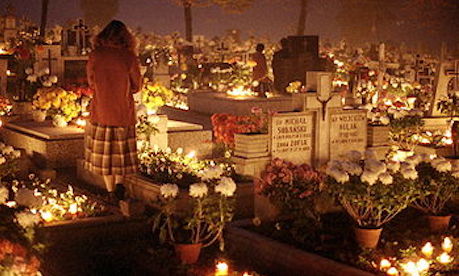All Souls falls during a time of year when many religions are thinking about death.
It is a period when ancient agricultural societies were preparing for the change of the seasons from summer to winter.
Pagans believe this is a time when there’s a thinning of the veil between the land of the living and the dead. Witches, Wiccans and other pagans observe Samhain during this time to celebrate the autumn harvest and the coming of winter.
All Souls Day also falls during the Islamic holy month of Muharram, when Shia Muslims prayerfully mourn the death of Hussain ibn Ali, the Prophet Muhammad’s grandson.
Although All Souls Day is primarily a Catholic holy day, it is also observed by the Eastern Orthodox Church, the Anglican church and a few other Protestant denominations.
In Latin American countries and communities, All Souls Day celebrations are often tied to Día de Muertos (also Día de los Muertos), or “the Day of the Dead,” which falls on Nov. 1 and 2.
Celebrations are elaborate and joyful, with observers participating in costume parades and visits to cemeteries. Some families create altars inside their homes to remember their departed relatives. Continue reading
Source
News category: Features.




